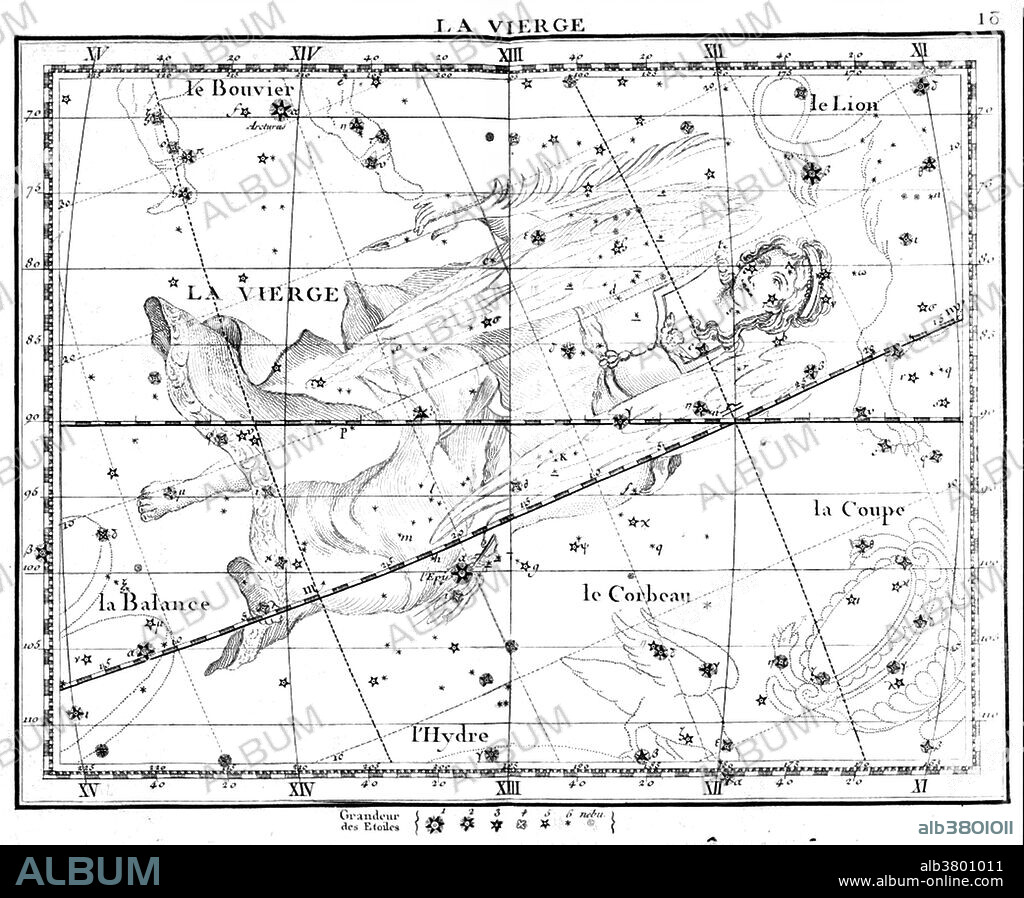alb3801011
Virgo Constellation, Zodiac, 1729

|
Add to another lightbox |
|
Add to another lightbox |



Title:
Virgo Constellation, Zodiac, 1729
Caption:
Virgo is one of the constellations of the zodiac. Its name is Latin for virgin. It was one of the 48 constellations listed by the 2nd century astronomer Ptolemy, and remains one of the 88 modern constellations defined by the International Astronomical Union. The Greeks and Romans associated Virgo with their goddess of wheat/agriculture, Demeter-Ceres. Virgo is often portrayed carrying two sheaves of wheat. Virgo is the sixth astrological sign in the Zodiac. The Atlas Coelestis is a star atlas published posthumously in 1729, based on observations made by the First Astronomer Royal, John Flamsteed. The Atlas, the largest that ever had been published and the first comprehensive telescopic star catalogue and companion celestial atlas, contains 26 maps of the major constellations visible from Greenwich, with drawings made in the Rococo style by James Thornhill. One of his main motivations to produce the Atlas, was to correct the representation of the figures of the constellations, as made by Bayer's, Uranometria (1603). Bayer represented the figures viewed from behind (not from the front, as was done since the time of Ptolemy), which reversed the placement of stars and created unnecessary confusion.
Credit:
Album / Science Source / U.S. Naval Observatory Library
Releases:
Model: No - Property: No
Rights questions?
Rights questions?
Image size:
3600 x 2972 px | 30.6 MB
Print size:
30.5 x 25.2 cm | 12.0 x 9.9 in (300 dpi)
Keywords:
1729 • 18TH CENTURY • 18TH CENTURY, THE • 18TH • ART • ARTWORK • ASTERISM • ASTROLOGICAL • ASTROLOGY • ASTRONOMICAL • ASTRONOMY • ATLAS COELESTIS • BW • CELEBRITY • CELESTIAL ATLAS • CELESTIAL BODY • CELESTIAL SPHERE • CELESTIAL • CONSTELLATION • DRAWING • FAMOUS • FLAMSTEED • HEAVENLY BODY • HEAVENLY • HISTORIC • HISTORICAL • HISTORY • HOROSCOPE • ILLUSTRATION ROCOCO STYLE • IMPORTANT • JOHN FLAMSTEED • NOTABLE • OCCULT • OCCULTISM • PATTERN OF STARS • SCIENCE • SIGNS OF THE ZODIAC • SIGNS • STAR ATLAS • STAR CHART • STAR MAP • VIRGIN, THE • VIRGO • WELL-KNOWN • ZODIAC • ZODIACAL
 Pinterest
Pinterest Twitter
Twitter Facebook
Facebook Copy link
Copy link Email
Email

